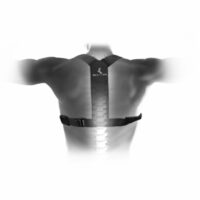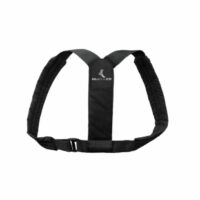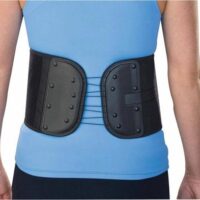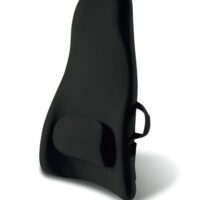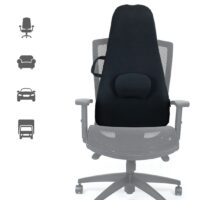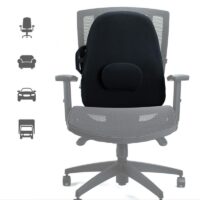Decoding Chest Pain
Understanding Chest Pain: Is It Your Spine or a Heart Attack?
Introduction
Chest pain can be a confusing and worrying experience. It’s crucial to know whether the pain is due to spine-related issues or something more serious like a heart attack. This article, written from a physiotherapist’s perspective, aims to shed light on the different causes of chest pain and guide you on what to do next.
Deciphering Spine-Related Chest Pain
When your chest wall pain is linked to spine issues, it often presents differently than heart-related pain. For example, pain caused by spinal problems usually feels more localised and can worsen with certain movements or postures.
Common signs include sharp, stabbing sensations that radiate through the thoracic wall, often intensified by actions like coughing, sneezing, or sudden movements. Additionally, a dull, persistent ache between the shoulder blades could indicate muscle strain from poor posture or prolonged sitting. These symptoms are key indicators that your pain might be spine-related.
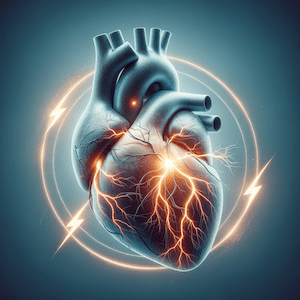
Heart Attack Symptoms
Heart attack symptoms are more systemic and urgent. They include persistent chest discomfort often described as pressure, squeezing, or fullness. This discomfort might spread to other upper body parts like arms, back, neck, jaw, or stomach.
Other signs include shortness of breath, cold sweat, nausea, and dizziness. These symptoms require immediate medical attention, and if you suspect a heart attack, calling emergency services (000 in Australia) is vital.
The Role of Physiotherapy in Chest Pain
Once a heart attack is ruled out, consulting a physiotherapist becomes an important step. A skilled physiotherapist can evaluate your spinal and rib joints, muscles, and provide targeted treatment. Techniques like manual therapy, specific exercises, and posture correction can significantly relieve thoracic spine and rib pain caused by spine-related issues.
Respiratory issues such as pneumonia may also cause chest tightness and shortness of breath, so sometimes you may even need the assistance of a respiratory physiotherapist to improve your lung functions and chest symptoms.
Related articles:
Benefits of Physiotherapy for Chest Pain
Physiotherapy offers numerous benefits for individuals experiencing chest and upper back pain, especially when it’s related to the spine. It provides a non-invasive, drug-free approach to pain relief. Physiotherapists use a variety of techniques like manual therapy, therapeutic exercises, and soft tissue mobilisation to alleviate pain. These methods help in improving joint mobility, reducing inflammation, and enhancing muscle function.
Furthermore, physiotherapy can address the underlying causes of pain, such as poor posture or muscle imbalances, reducing the likelihood of recurring pain. Patients often experience improved flexibility, strength, and an overall better quality of life.

Improving Posture and Its Benefits
Improving posture is a critical aspect of managing spine-related chest pain. Poor posture can lead to muscle strain and imbalances, which often contribute to thoracic pain. Physiotherapists can provide guidance on proper posture techniques, both at rest and during activities.
By correcting posture, individuals can relieve undue stress on their spine and muscles, thus reducing pain and preventing further injuries. Good posture also promotes better breathing and circulation, enhancing overall health. Regular posture exercises and ergonomic advice from a physiotherapist can lead to long-term relief and improved spinal health.
Recent Research and Developments
Recent advancements in physiotherapy have shown promising results in treating spine-related chest pain. Studies indicate that targeted spinal manipulation and therapeutic exercises can reduce pain and improve mobility. Incorporating these new methods can enhance treatment effectiveness and patient comfort.
Conclusion
Recognising the symptoms and understanding the cause of your chest pain is crucial. Whether it’s spine-related or a potential heart attack, getting the correct diagnosis and treatment is key to your health and well-being.
What to Do?
If you’re experiencing chest pain, consult your doctor or physiotherapist. For immediate concerns or symptoms resembling a heart attack, don’t hesitate to call 000. For spine-related issues, seek the professional advice of a physiotherapist who can provide tailored treatment and guidance.
Related Articles
- Thoracic & Chest Pain: Readers can find a thorough investigation into the causes of thoracic and chest pain, emphasising the need for prompt treatment of potentially serious conditions like cardiac issues or malignancy.
- Thoracic Facet Joint Pain: This article provides insights into common causes of upper back pain and injury, particularly focusing on conditions affecting the thoracic spine.
- Rib Stress Fracture: Offers an understanding of how injuries like rib stress fractures can contribute to chest and upper back pain, highlighting the role of posture in managing such conditions.
- Posture Exercises: Essential for anyone seeking to improve their posture. Good posture can significantly reduce spine-related chest pain.
- Side Strain: Discusses the management of upper back pain and injuries, with a focus on muscle-related injuries such as side strains and their treatment.
- Scheuermann’s Disease: A Comprehensive Overview: Provides insights into bone-related injuries that can cause upper back pain, including conditions like Scheuermann’s Disease.







